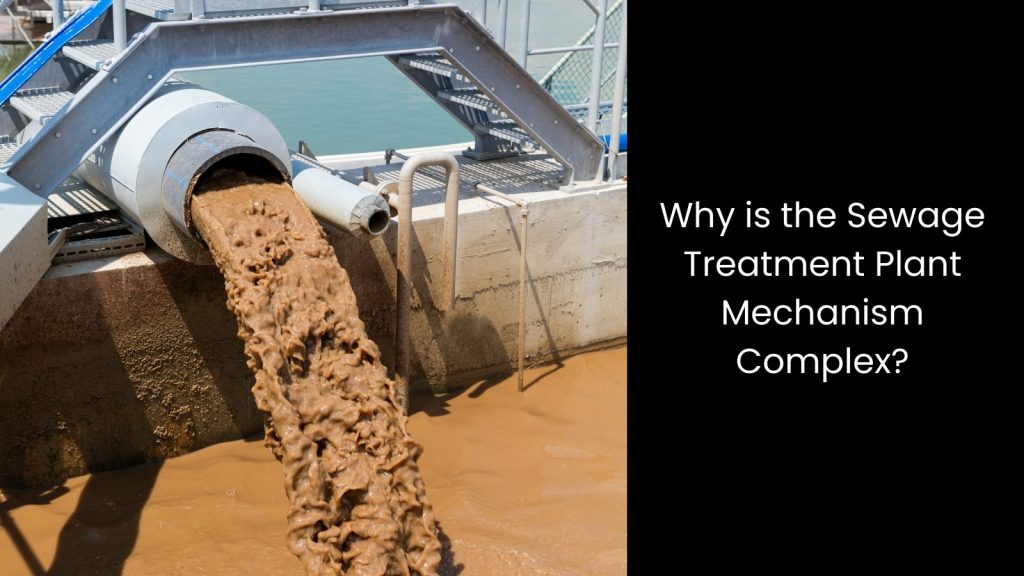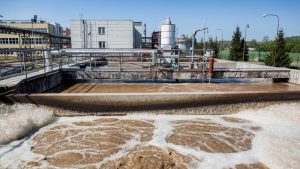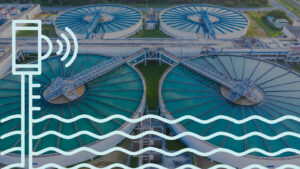Sewage treatment has long been a challenge for growing cities and industries. The main reasons were rising populations and environmental concerns pushing the limits of traditional wastewater management. When water scarcity becomes a pressing issue and regulations demand cleaner discharge, sewage treatment plants must evolve to meet modern demands. The need for more efficient, cost-effective, and sustainable solutions has never been increasing day by day. This sparks groundbreaking innovations that promise to reshape the future of wastewater treatment. But what does this transformation look like? How are treatment facilities adapting to handle increasing wastewater loads while ensuring minimal environmental impact? The answers lie in the latest advancements that are setting new standards in the industry.
In this article, we discover the advancements in sewage treatment plant technologies.
In this article, we discover the advancements in sewage treatment plant technologies.
We will explore
- Why is the Sewage Treatment Plant Mechanism Complex?
- Trending Advancements in Sewage Treatment Plant Technologies
- Membrane Bioreactors (MBRs)
- AI-Powered Process Optimisation
- Advanced Oxidation Processes (AOPs)
- Centralising Sewage Treatment Network
3. Optimising Sewage Treatment Plant Workflow Using Modern Technologies
Why is the Sewage Treatment Plant Mechanism Complex?

- We all know that sewage treatment keeps cities clean, yet not many people realise how complicated the whole process actually is.
- These plants first collect wastewater from homes, industries, and businesses while directing it through a series of steps. The journey starts with screening, where large debris like plastic and rags get removed. After that, the water moves to primary treatment, and it allows heavy solids to settle while oils float to the top for removal.
- Next comes secondary treatment, where bacteria break down organic matter. This makes the water much cleaner. Finally, advanced filtration and disinfection, which use chemicals, UV light, or membranes, ensure the water is safe before being released or reused.
- Do you think that this sounds straightforward? It is not!
- The plant operations deal with unpredictable challenges daily. High volumes of wastewater during heavy rainfall, industrial pollutants messing up treatment efficiency, and fluctuating energy costs all create headaches. On top of that, maintaining complex machinery, handling toxic sludge, and meeting strict environmental rules make running a sewage treatment system a nonstop balancing act.
- Not to mention that modern plants also juggle sustainability goals, pushing for energy recovery and water reuse. With ageing infrastructure and rising urban populations, this must continuously adapt.
- So, it is more complicated than it actually seems to be. That is why it needs a helping hand from cutting-edge technologies.
Trending Advancements in Sewage Treatment Plant Technologies

Membrane Bioreactors (MBRs)
One of the key challenges in a treatment plant involves handling wastewater efficiently while reducing sludge and maintaining water quality. Membrane Bioreactors or MBRs, solve this problem as they combine biological treatment with membrane filtration. This pushes the treatment process beyond old limitations.
You may know that traditional systems rely on settling tanks to separate sludge from treated water, but that approach takes up space and struggles with fine particles. MBRs remove this bottleneck by using ultrafiltration or microfiltration membranes, which act like super-fine sieves. Plus, the latter lets only clean water pass through while trapping bacteria and solid waste. This upgrade allows them to operate in smaller areas and makes them perfect for urban environments where land costs keep rising.
At the same time, MBRs boost treatment efficiency by maintaining high concentrations of microorganisms that break down pollutants faster. Since membranes handle solid separation so well, these systems cut down on excess sludge production and reduce the need for disposal and lowering environmental impact.
As cities demand better wastewater solutions, the latter operators continue turning to MBRs to produce cleaner water. It also helps meet strict discharge limits and reuse treated wastewater in industries and irrigation beyond limits.
You may know that traditional systems rely on settling tanks to separate sludge from treated water, but that approach takes up space and struggles with fine particles. MBRs remove this bottleneck by using ultrafiltration or microfiltration membranes, which act like super-fine sieves. Plus, the latter lets only clean water pass through while trapping bacteria and solid waste. This upgrade allows them to operate in smaller areas and makes them perfect for urban environments where land costs keep rising.
At the same time, MBRs boost treatment efficiency by maintaining high concentrations of microorganisms that break down pollutants faster. Since membranes handle solid separation so well, these systems cut down on excess sludge production and reduce the need for disposal and lowering environmental impact.
As cities demand better wastewater solutions, the latter operators continue turning to MBRs to produce cleaner water. It also helps meet strict discharge limits and reuse treated wastewater in industries and irrigation beyond limits.
AI-Powered Process Optimisation
Gone are the days when they relied only on manual monitoring and guesswork to keep operations running smoothly. Since AI started dominating the industrial world, AI-powered process optimisation now takes wastewater management beyond traditional limitations, using artificial intelligence and IoT sensors to monitor, predict, and fine-tune treatment efficiency in real-time.
Instead of waiting for lab results or human intervention, smart sensors track changes in flow rate, pollutant levels, and equipment performance every second. AI steps in to analyse this flood of data, detecting patterns, spotting potential failures before they happen, and adjusting processes automatically. This real-time decision-making helps them save energy, prevent chemical overdosing, and keep treated water quality consistently high.
Further, operators no longer need to rely on routine checks alone because AI flags issues the moment they arise. This reduces maintenance downtime and cuts costs. The system even predicts peak demand times, ensuring treatment capacity stays ahead of incoming wastewater loads. With stricter environmental rules and growing urban populations, plants must process sewage faster and cleaner than ever.
So, yes, AI makes that possible by turning complex treatment systems into smart, self-adjusting operations.
Instead of waiting for lab results or human intervention, smart sensors track changes in flow rate, pollutant levels, and equipment performance every second. AI steps in to analyse this flood of data, detecting patterns, spotting potential failures before they happen, and adjusting processes automatically. This real-time decision-making helps them save energy, prevent chemical overdosing, and keep treated water quality consistently high.
Further, operators no longer need to rely on routine checks alone because AI flags issues the moment they arise. This reduces maintenance downtime and cuts costs. The system even predicts peak demand times, ensuring treatment capacity stays ahead of incoming wastewater loads. With stricter environmental rules and growing urban populations, plants must process sewage faster and cleaner than ever.
So, yes, AI makes that possible by turning complex treatment systems into smart, self-adjusting operations.
Advanced Oxidation Processes (AOPs)
It was indeed problematic for them to remove stubborn pollutants using traditional methods, as many harmful chemicals and pharmaceuticals slipped through standard filtration.
Then, what is the solution?
This is where the Advanced Oxidation Processes enter and change the whole game by introducing powerful treatments that break down even the toughest contaminants. Using ozone, hydrogen peroxide, or UV light, AOPs trigger chemical reactions that destroy micropollutants at a molecular level. This ensures cleaner and safer treated water.
Unlike conventional systems that rely on settling and biological treatment, AOPs eliminate substances that bacteria cannot digest, such as pesticides, industrial chemicals, and hormone-disrupting compounds. These processes generate highly reactive molecules called hydroxyl radicals, which aggressively attack and neutralise harmful compounds in wastewater.
These plants benefit from this advanced approach because it removes odorous compounds, reduces the toxicity of discharged water, and even helps with disinfection. With growing concerns over water pollution and stricter environmental rules, AOPs ensure that plants meet high-quality standards without relying on excessive chemicals. Since these processes work rapidly and do not produce extra sludge, they also cut down on waste management efforts.
As urban populations increase and new pollutants keep emerging, they continue adopting AOPs to stay ahead. The authorities are aware that with this technology they can ensure that wastewater treatment remains effective, sustainable, and ready for future challenges.
Then, what is the solution?
This is where the Advanced Oxidation Processes enter and change the whole game by introducing powerful treatments that break down even the toughest contaminants. Using ozone, hydrogen peroxide, or UV light, AOPs trigger chemical reactions that destroy micropollutants at a molecular level. This ensures cleaner and safer treated water.
Unlike conventional systems that rely on settling and biological treatment, AOPs eliminate substances that bacteria cannot digest, such as pesticides, industrial chemicals, and hormone-disrupting compounds. These processes generate highly reactive molecules called hydroxyl radicals, which aggressively attack and neutralise harmful compounds in wastewater.
These plants benefit from this advanced approach because it removes odorous compounds, reduces the toxicity of discharged water, and even helps with disinfection. With growing concerns over water pollution and stricter environmental rules, AOPs ensure that plants meet high-quality standards without relying on excessive chemicals. Since these processes work rapidly and do not produce extra sludge, they also cut down on waste management efforts.
As urban populations increase and new pollutants keep emerging, they continue adopting AOPs to stay ahead. The authorities are aware that with this technology they can ensure that wastewater treatment remains effective, sustainable, and ready for future challenges.
Centralising Sewage Treatment Network
There is no need to make processes more complicated when they are already packed with challenges, especially in the latter that handle massive wastewater loads daily. Instead of managing scattered systems separately, the centralisation of all networks allows every process to be monitored and controlled from one central location. This strategy makes operations smoother and more efficient.
When all treatment units, sensors, and pipelines connect to a single location, operators can track real-time data, detect issues instantly, and make quick adjustments without physically checking every site. This unified control reduces human errors, minimises breakdowns, and prevents overflows before they turn into disasters.
These plants using centralised networks also optimise resource distribution and ensure chemicals, energy, and manpower get allocated based on actual demand rather than estimates. Advanced automation and AI-driven monitoring further boost performance, allowing plants to adjust aeration, filtration, and sludge management with precision.
With rising urban populations and stricter environmental regulations, centralisation makes it easier to meet wastewater treatment goals without unnecessary delays. Instead of struggling with outdated, disconnected systems, plants can integrate modern technologies that streamline operations and improve treated water quality.
When all treatment units, sensors, and pipelines connect to a single location, operators can track real-time data, detect issues instantly, and make quick adjustments without physically checking every site. This unified control reduces human errors, minimises breakdowns, and prevents overflows before they turn into disasters.
These plants using centralised networks also optimise resource distribution and ensure chemicals, energy, and manpower get allocated based on actual demand rather than estimates. Advanced automation and AI-driven monitoring further boost performance, allowing plants to adjust aeration, filtration, and sludge management with precision.
With rising urban populations and stricter environmental regulations, centralisation makes it easier to meet wastewater treatment goals without unnecessary delays. Instead of struggling with outdated, disconnected systems, plants can integrate modern technologies that streamline operations and improve treated water quality.
Optimising Sewage Treatment Plant Workflow Using Modern Technologies

Why move around multiple systems when one powerful Wastewater Control Tower can do it all? Such advanced technology can seamlessly manage sewage collection, pumping, treatment, and recycling under a single intelligent platform. AI-powered automation detects issues instantly, optimises resource use, and ensures compliance, all with real-time monitoring. If you collaborate with an industry pioneer, you can surely future-proof your sewage treatment plant with a fully integrated solution.







